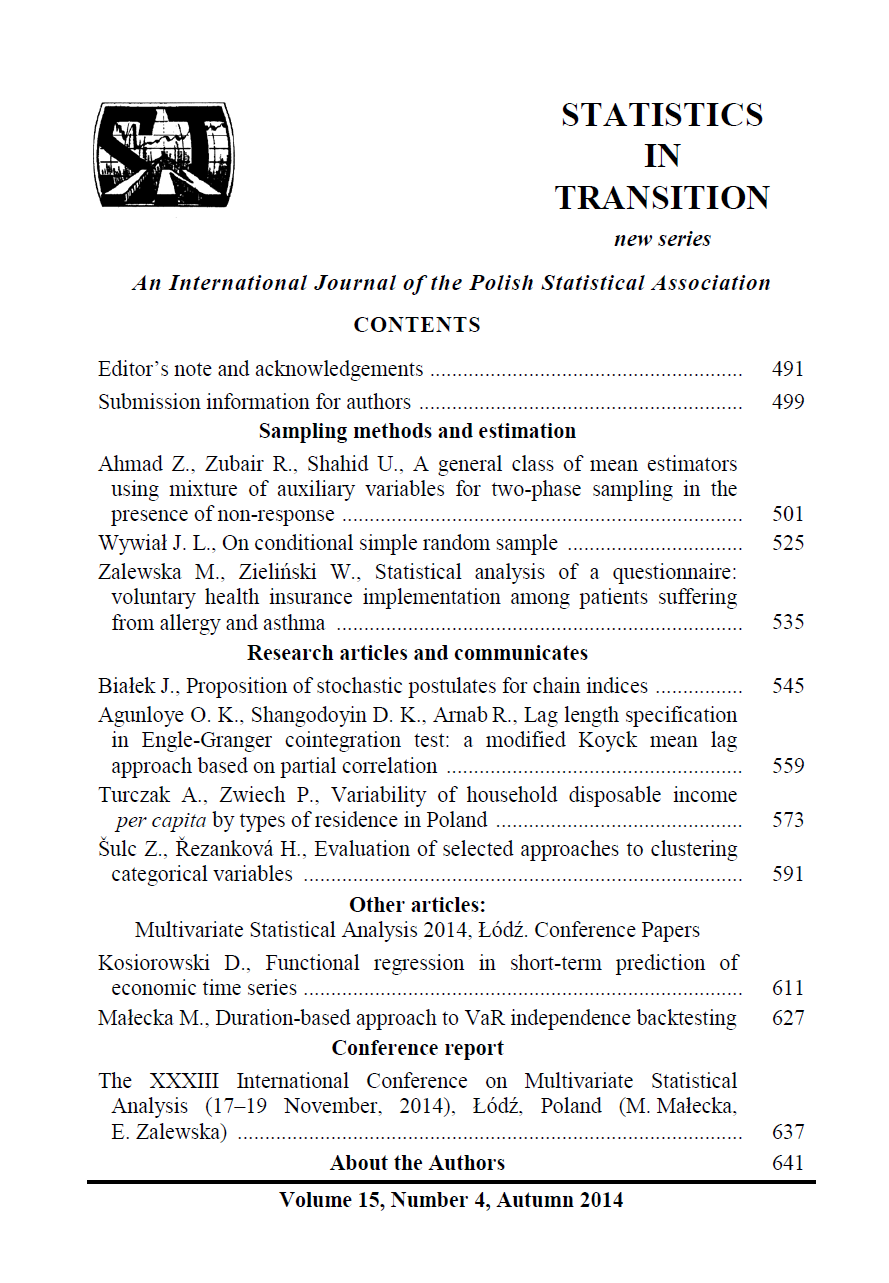ARTICLE
ABSTRACT
Dynamic development in the area of value-at-risk (VaR) estimation and growing implementation of VaR-based risk valuation models in investment companies stimulate the need for statistical methods of VaR models evaluation. Following recent changes in Basel Accords, current UE banking supervisory regulations require internal VaR model backtesting, which provides another strong incentive for research on relevant statistical tests. Previous studies have shown that commonly used VaR independence Markov-chain-based testing procedure exhibits low power, which constitutes a particularly serious problem in the case of finite-sample settings. In the paper, as an alternative to the popular Markov test an overview of the group of duration-based VaR backtesting procedures is presented along with exploration of their statistical properties while rejecting a non-realistic assumption of infinite sample size. The Monte Carlo test technique was adopted to provide exact tests, in which asymptotic distributions were replaced with simulated finite sample distributions. A Monte Carlo study, based on the GARCH model, was designed to investigate the size and the power of the tests. Through the comparative analysis we found that, in the light of observed statistical properties, the duration-based approach was superior to the Markov test.
KEYWORDS
VaR backtesting, Markov test, Haas test, TUFF test, Weibull test, gamma test, EACD test
JEL
C22, C52, D53, G11
REFERENCES
BERKOWITZ, J., CHRISTOFFERSEN, P., PELLETIER, D., (2011). Evaluating Value-at-Risk Models with Desk-Level Data. Management Science 12(57), 2213–2227.
CHRISTOFFERSEN, P., (1998). Evaluating Interval Forecasts. International Economic Review 39, 841–862.
CHRISTOFFERSEN, P., PELLETIER, D., (2004). Backtesting Value-at-Risk: A Duration-Based Approach. Journal of Financial Econometrics 1(2), 84–108.
DOMANSKI, CZ., PEKASIEWICZ, D., BASZCZYNSKA, A., WITASZCZYK,A., (2014). Testy statystyczne w procesie podejmowania decyzji. Wyd. UŁ, Łódź.
DUFOUR, J. M., (2006). Monte Carlo Tests with Nuisance Parameters: A General Approach to Finite-Sample Inference and Nonstandard Asymptotics. Journal of Econometrics 133(2), 443–477.
ENGLE, R. F., RUSSEL, J. R., (1998). Autoregressive Conditional Duration: A New Model for Irregularly Spaced Transaction Data. Econometrica 66(5), 1127–62.
FISZEDER, P., (2009). Modele klasy GARCH w empirycznych badaniach finansowych. Wydawnictwo naukowe uniwersytetu Mikołaja Kopernika, Toruń.
HAAS, M., (2001). New methods in backtesting. Mimeo. Financial Engineering Research Center Caesar, Friedensplatz, Bonn.
KUPIEC, P., (1995). Techniques for Verifying the Accuracy of Risk Measurement Models. Journal of Derivatives 2, 174–184.
LOPEZ, J., (1999). Methods for Evaluating Value-at-Risk Estimates. FRBSF Economic Review 2, 3–17.
MAŁECKA, M., (2011). Prognozowanie zmienności indeksów giełdowych przy wykorzystaniu modelu klasy GARCH. Ekonomista 6, 843–860
